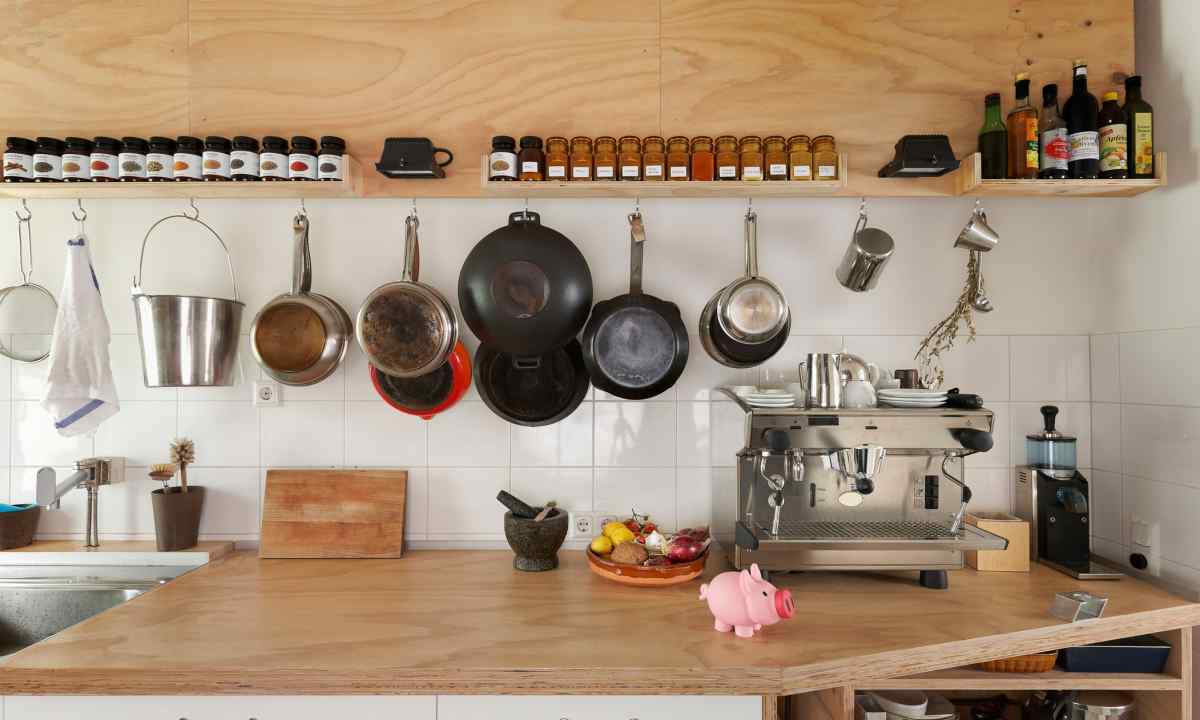Kitchen cabinets - actively used interior element therefore not only their exterior or arrangement are important. The choice of reliable fastenings - very important task, cabinets have to maintain the weight of kitchen utensils and to be at the same time safe.
Hinged kitchen cabinets are intended for storage in them to various small kitchen utensils, products, kitchen household appliances. Naturally, when mounting these pieces of complete kitchen special attention should be paid to quality and reliability of hinge plate.
The most widespread type of mounting of kitchen cabinet on wall is its hinge plate on the screws twisted in spreader (some call them expanding) dowel of the corresponding size. In household shops the screws with dowels usually are sold by couples. Stop the choice on screw 8 on 80, it is better galvanized. There will be quite enough such size for reliable fastening of cabinet on wall.
Use instead of hook screw with thread for its screwing in dowel is possible. Many find such way even more convenient as there is no need to select screw head size under the cabinet loop size. It is simple and convenient to make the procedure of attaching of kitchen furniture, using mounting hinged rail and adjustable veils. If you intend to place vryad several cabinets, and want to achieve the maximum joining between them both coincidence in the horizontal and vertical planes, then the best option, than to use these devices, to you not to find. Such way allows to hang furniture in kitchen in case walls do not differ in ideal flatness or the difference down is observed because the tile has laid out only kitchen apron, and there is normal wall without tile above. Problem of this sort can be solved also by means of normal wooden rail thickness of tile, close to thickness, and 40-50 mm wide. Almost become obsolete type of fastening of cabinet on wall is its attaching on the screws twisted in wooden chopik. The tree has property to crack over time and reliability of such fastening sooner or later will be broken.
1. Provide yourself with the necessary tool. If for work on brick is simple electric drill enough, then on concrete it is simpler to work with the drill having function of the perforator (in the people – the hammer drill). Drills have to correspond to situation too (drill on concrete, drill with pobeditovy tip – for brick). 2. The size of fixing parts (dowels, screws) – entirely your choice, but also it is unreasonable to do hole in wall of the size of fist too. The most optimum the screw of 8*80 V to brick wall will perhaps use longer fastenings (10*120).3. If you drill opening in brick wall, pay attention to plaster coat thickness (sometimes it is rather impressive). Remember that the dowel has to enter brick, but not plaster, not less, than on 5-6 cm 4. Try not to hang kitchen cabinets on plasterboard walls. At all precautions the design will hardly be rather reliable. Do not overload your hinged furniture. Everything has to be moderately!

